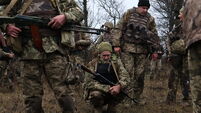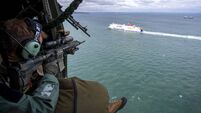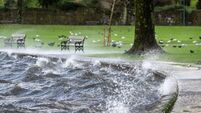Typhoon rescue plan ‘too slow’
The official death toll stood at 108 after the worst floods in decades washed out roads, snapped bridges, sent dwellings crashing into rivers and forced authorities to deploy hundreds of helicopters for rescue missions.
The typhoon has shattered infrastructure in the south, a stronghold of the opposition Democratic Progressive Party (DPP). The damage will likely worsen already bleak forecasts for third-quarter economic contraction.
“The KMT is not proactive enough in addressing the suffering of the people,” said DPP spokesman Cheng Wen-tsang, referring to the president’s Nationalist Party, or Kuomintang. “The reaction to the disaster is too slow and messy. We should have a better plan based on Taiwan’s search-and-rescue experience, but Ma Ying-jeou wasn’t prepared. And that shows that his people lack experience.”
Some residents challenged Ma as he toured relief operations sites, saying his government should have accepted international help.
“The United States, Japan, Singapore and mainland China have offered financial assistance and we welcome that,” Ma said.
Rescuers found 6,500 people stranded near Alishan, a scenic mountain spot, and more than 500 in the town of Liouguei in stricken Kaohsiung county. But hundreds remained unaccounted for in remote areas.
Internet services were being restored, but repairs to undersea cables could take two months.
Disaster officials said months of work would be needed for some roads, while other reconstruction could take a year or more.
At a rescue hub in Cishan, patience was running thin among relatives waiting days for news of family members in the path of mudslides that flattened villages.
“How can they be so slow? Clearly they should be sending more helicopters, right?” said Yan Min-rong, 29, as he pored over lists of survivors.
Regional resentment at the authorities was apparent. “It’s too slow. They don’t care about the south. They just care about the north,” said Chen Fu-rong, head of a funeral association in Kaohsiung, as she stood alongside bodies of victims.
The military has deployed more than 34,000 personnel and 382 helicopters, it said.
“The disaster is huge and many bridges were smashed. Vast numbers of people have been affected and the weather has been very bad,” said Tseng Ching-liang, an army colonel in Cishan.
Helicopters have at times had to hover over devastated areas and throw down ropes to hoist villagers to safety.













